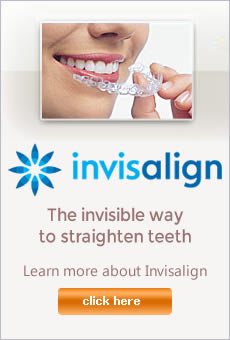One of the questions we get asked the most from parents and patients is: “which is better: Braces or Invisalign?”
It’s a hard question to answer because so much depends on each patient and their specific needs. That’s why Dr. Azar-Mehr will prioritize spending time with your child and listening to their needs and goals. That’s what helps us land on the best possible treatment plan for each unique patient who comes to see us for orthodontics.
Understanding Braces
Braces have long been a trusted solution for correcting misaligned teeth. They consist of metal brackets bonded to the teeth, connected by wires that gradually shift the teeth into their desired positions. While traditional metal braces are still widely used, advancements in orthodontic technology have introduced options like ceramic braces and lingual braces, offering more discreet alternatives for patients.
The Ins and Outs of Invisalign
Invisalign represents a modern approach to orthodontic treatment, utilizing a series of clear, removable aligners to straighten teeth gradually. These aligners are custom-made for each patient, providing a comfortable and virtually invisible way to achieve a straighter smile. Invisalign is particularly popular among teenagers and adults who desire a more discreet treatment option.
Comparing Effectiveness
Both braces and Invisalign are highly effective in correcting a wide range of orthodontic issues, including crooked teeth, overcrowding, and bite misalignment. The choice between the two often comes down to individual preferences, lifestyle factors, and the specific needs of the patient.
Maintenance and Lifestyle Considerations
One significant difference between braces and Invisalign lies in their maintenance and lifestyle considerations. With braces, certain foods must be avoided to prevent damage to the brackets and wires. Additionally, diligent oral hygiene practices are essential to prevent plaque buildup around the braces. In contrast, Invisalign offers greater flexibility since the aligners can be removed for eating and oral hygiene. However, patients must commit to wearing the aligners for at least 20-22 hours per day for optimal results.
Comfort and Aesthetics
Comfort and aesthetics are crucial factors for both parents and their children when choosing between braces and Invisalign. While braces may cause initial discomfort and occasional irritation from wires and brackets, advances in orthodontic technology have made them more comfortable than ever before. Invisalign, on the other hand, is praised for its comfort and discreet appearance, allowing patients to straighten their teeth without drawing attention to their orthodontic treatment.
Consultation and Customization
Ultimately, the decision between braces and Invisalign should be made in consultation with an experienced orthodontist. During the initial consultation, Dr. Azar-Mehr will evaluate your child’s oral health, discuss treatment options, and address any concerns you may have. Together, you can create a customized treatment plan that meets your child’s needs and fits your family’s lifestyle.
Choosing between braces and Invisalign is a significant decision that requires careful consideration. By understanding the differences between these orthodontic treatments and consulting with a knowledgeable team, you can embark on a journey towards a straighter, healthier smile for your child. Remember, no matter which option you choose, the end result will be a confident and radiant smile that lasts a lifetime.




